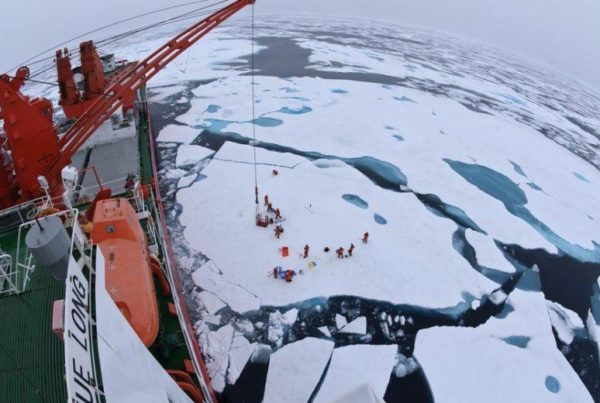By Dan A. Doran (Originally published in the Canadian Military Journal, Vol 16, No. 2. Re-printed with permission)
The conventional thinking on attrition within the Canadian Reserves is couched on the premise that it is statistically similar to that of the Regular Force, and a problem that cannot be reasonably solved in any manner different than those approaches taken by the latter. This type of thinking ignores a fundamental difference in the nature of these statistics when examined in a more granular fashion, as well as the organizational and structural challenges faced uniquely by reservists throughout their careers. This article intends to lend additional thinking to this problem and suggest possible alternatives that would go a long way in mitigating at least some of these unique challenges through a more strategic outlook on human resource management within the reserves, and accepting hard realities on the perceived/desired vs. functional capabilities of the reserves.
To begin, one needs to look at the attrition statistics within the Regular Force as a baseline for comparison to that of its reserve counterpart. The turnover within the Regular Force averaged 7.75%[1] between 2003 and 2010, with slightly higher annual percentages in the latter half of the data set. The higher numbers are attributed mainly to the predictable retirement of ‘Baby Boomers’ from the workforce[2] The majority of this attrition stems from members leaving at the normal retirement age, and to a lesser degree, members retiring in middle age after conclusion of their 20 or 25 year service contract. These numbers are very good compared to the private sector, where employee tenures can average as low as 0.8 years.[3]
When one examines the statistics in the reserves, the numbers are not starkly different – average reserve attrition rates are around 10%[4] and this with a significantly larger margin of error, due to a far smaller sample set than the baseline regular force statistics. The difference with these statistics does not exist in the actual number but in the major employee types that make up these numbers. Close to 95% of releases within the reserve data set come from members with less than two years of military service at the rank levels of private and corporal. A regiment can lose close to 50% of an annual recruit intake within the first 24months after they join, and this is due mainly to voluntary release. These statistics should not be surprising, as it defines one of the core characteristics of the reserve employee base. The career of most reservists rarely extends beyond the 4-5 years that the individual is in school, ending, for the most part, when they graduate from their respective programs and find full-time work. At any given time in a regiment, these employee groups represent close to 80% of the regiment’s active members, with the remaining 20% representing members with more than five years of service, and typically holding the ranks of master corporal and above.
This article, however, is not about the 80% majority, as these soldiers are a statistic that is hardwired into the training and organizational culture of the reserves. These soldiers are young and typically in school which makes part-time employment during the school year and full-time employment over the summers an excellent short-term fit to meet their income needs. It should also be noted that this is a key marketing angle used by recruiting centres to convince potential reservists to enlist[5] when the 80% group’s employment needs change, it stands to reason that they would forgo their reserve employment in favour of full-time work related to their field of study or interest.
Instead, this article focuses upon the minority 20% that decide to stay in the reserves, and who represent the essential leadership core of any reserve regiment. Without these senior soldiers, reserve regiments would simply grind to a halt as the unit would lose its planning, coordination, and leadership capabilities. These members represent a sub-group that has remained relatively unknown to most Regular Force members, since they rarely deploy on overseas missions (or if they have done so, it was generally early in their careers) or engage in full-time Class B service. These reservists have full-time civilian careers and lives, and they chose to serve despite the non-military commitments that lead most to release. Given their lack of visibility and voice, these individuals are poorly understood by the Regular Force leadership, and as such, this sub-group is often poorly served by training and work systems not of their making. This article hopes to clarify the psychology of this sub-set of soldiers, and explain why and at what point in their careers they are most at risk of releasing. Further, this article will propose solutions to mitigate these risks through re-aligning a system that is unintentionally designed to disenfranchise its most important human resource assets.

DND photo ET2015-5178-017 by Corporal Stuart MacNeil
Discussion
In an attempt to visually represent a typical career for the 20% sub-set of reservists, Figure 1 illustrates the career of such a member. On the graph’s left vertical axis is the member’s relative level of commitment to the reserves with respect to time and effort. This axis maps the blue inverted parabolic line. The right vertical axis represents the number of hours in a waking day (16-hours) as a percentage. This axis maps the shaded areas that represent what a reservist is engaged in at various periods in his life – the shaded areas are labelled for easier understanding. The bottom horizontal axis and top horizontal axis correspond to the years of military service and age of the reservist respectively. Green dots on the upper horizontal axis indicate relative ranks attained by a member through their years of service, with vertical dashed red lines to demarcate key life events. The data used to fill out this table consists of a combination of anecdotal interviews with senior members of 34 Combat Engineer Regiment, as well as a written survey issued to unit members in 2014. The name of the figure – The Lambiris Curve, is attributed to the 34 CER member who inspired this article. He currently is living through the acute dip in the middle of the curve, and is at high risk of leaving the unit.
In moving through the graph, the typical reservist begins his military career with very little other than school and the military on his daily plate of events – this trend continues until the member completes his academic training and moves to the work force. As the member’s military, civilian, and personal life continues to develop, each element becomes more demanding on his/her available time in a given day. As these demands become more pronounced, the member becomes progressively less involved with the unit’s activities and training, illustrated by the figure’s blue inverted parabolic line. In many cases, the member is forced to make choices to forgo progression in one professional career in favour of another. Given the reality that a reservist’s military career does not ‘pay the mortgage,’ it is usually this career that tends to suffer. The member then becomes progressively less involved, and in turn, less attached to the unit and its regular activities until said member reaches a decision point, whereby the member either accepts that he/she remains in the reserves at a rank and position below their actual level of competency, or he/she simply releases.

Author
Figure 1: Lambiris Curve – Multi-axis mapping of a typical reservist’s military, civilian, personal and professional commitments
One of the greatest functional limitations that lead to a member’s degeneration to the low point in the graph is the need to attend career-related courses in the reserves that he/she does not have the time to attend, due to civilian work and family commitments. This is due, in large part, to the superimposing of regular force training paradigms on the Reserve Force in the form of multi-month residence based courses. In many cases, Reserve and Regular Force members attend the same courses concurrently. The Regular Force thinking is that this creates a consistency in training throughout the Canadian Armed Forces (CAF), and facilitates interoperability between the two components. The CAF has toyed with the scope of this approach, from aiming to have complete interoperability,[6] to focussing upon maintaining “…a small number of Reservists at the same training level as the Regular Force.[7] This thinking is flawed for the singular reason of reserve skill fade. While a reservist can attend and succeed in regular force career progression courses, the reserve member simply does not practice these learned skills at a sufficient frequency and intensity at a reserve unit to be proficient in all of them, and to the same degree as his Regular Force counterpart. As such, the time, effort and money spent on giving these reservists equivalent and transferable training fails to achieve the objective of consistency within the system, while setting up impassible career barriers for members who wish very much to progress in their part-time military career, but cannot do so, due to commitments related to their civilian careers. This situations makes for a ‘lose-lose’ scenario for the CAF for a number of reasons. Firstly, the CAF loses out on the opportunity to develop motivated and competent leaders who have the will to be engaged, but not the means. Secondly, it leads to members being put into a position whereby they no longer feel engaged and at risk of release. And thirdly, it puts additional stress upon an already-stretched training system to run very time intensive courses for reservists who will more than likely only use a limited number of the skills taught, and then within a very specific capacity.
Given these factors, it would seem more realistic for the CAF to re-align training so as to achieve their reserve support needs while not sacrificing the career development of its members. What this means is that the CAF needs to better understand what purposes the reserves serve, and how best to gear the training system accordingly. If one examines the nature of reserve support to the Regular Force anecdotally over the past decade, it has consisted typically of: (1) junior rank support to battle groups in operation; (2) staff support in higher headquarters; and (3) backfilling positions throughout the CAF on a contractual basis. If one assumes these full-time reservist groups represent the majority of that sub-set, it becomes clear that Regular Force parity may not be required beyond the rank of private, as long as the individual is employed in a mainly-staff role (senior members), or in a non-leadership field role (junior members). This conclusion re-frames the entire needs debate related to reserve training, and forces one to consider the rationalizing of reserve training strategies and objectives.
What is the added value of a reserve captain attending a one-year grueling Army Operations Course in order to learn an operational planning process he may only rarely apply, and when he does so, it is in a very simplified form? Why does a reserve sergeant need to attend several trades and leadership courses that extend to multiple months of distance and residence training, only to learn skills he will apply in a very limited fashion one weekend a month? These questions become more salient when one asks the larger question of what are the roles and expectations of the reserves, and what is realistic to expect from soldiers that parade an average of 35 days-per-year, excluding summer training. The CAF would do well to examine the possibility of harmonizing capacities and needs, while being realistic with respect to the functional limitations in ability and availability inherent in any person that only periodically engages in military activity. This represents a significant challenge, due to the nature of the reserve power structure, which lends itself to creating a senior leadership group that is starkly different from its middle leadership group. More specifically, as a result of the current training and operations system, those that typically ascend to the highest echelons of the reserves are those individuals that: (1) are retired Regular Force members; (2) reservists who have spent the vast majority of their career in full-time service; or (3) have achieved a position more as a result of their availability to serve as opposed to their objective ability. These archetypes are rarely the best suited to discuss the real limitations of the reservists capacities because they simply have not lived them. The outcome of this leadership structure creates a training system that puts unrealistic demands upon members, and a command system that makes excessive operational demands upon its units. Combined, this creates a ‘perfect storm’ that compels some of the best members to leave as a result of no longer being able to adequately complete their job, and simultaneously, not wanting to do their military job in a poor fashion under unrealistic time constraints.
Conclusion
For this to change the training system and command direction has to understand the risks associated with their strategies which relate specifically to the mid-point in Figure 1, and the strategic implication of having so many members of their resource pool at risk of leaving at any time within that period. Should corrective action be taken to level the curve, one can see that in the right extreme of Figure 1, participation takes an upswing. This results from children being older and more autonomous, graduate studies having been completed, and civilian career progression levelling off. This is the ‘light at the end of the tunnel,’ and modifying business as usual approaches to instruction and command expectations will allow more members to traverse the ‘high risk’ period. In turn, it will better support the senior leadership needs of the reserves by deepening the resource pool and creating reserve leaders who can more easily navigate military and civilian professional success without having to choose one at the expense of the other, and it will more accurately represent the reserves through a more-uniform shared experience throughout its hierarchy.
Major Daniel A. Doran, CD, MA, a combat engineer, holds a Bachelor’s Degree in Civil Engineering from the Royal Military College of Canada, a Master’s Degree in Human Security and Peace Building from Royal Roads University and is currently working part-time to complete his MBA at John Molson School of Business. He has served as Deputy Task Force Engineer in Afghanistan during ROTO 01 of Op Athena, and has deployed as a United Nations Military Observer to Sudan. He is currently a reservist and OC of Command and Support Squadron at 34 Combat Engineer Regiment, Montréal, Quebec. He works as an Associate Director for the Project Management Unit (University Services) at McGill University.

DND photo PA02-2015-0213-067 by 32 Canadian Brigade Group Public Affairs



